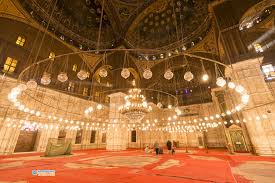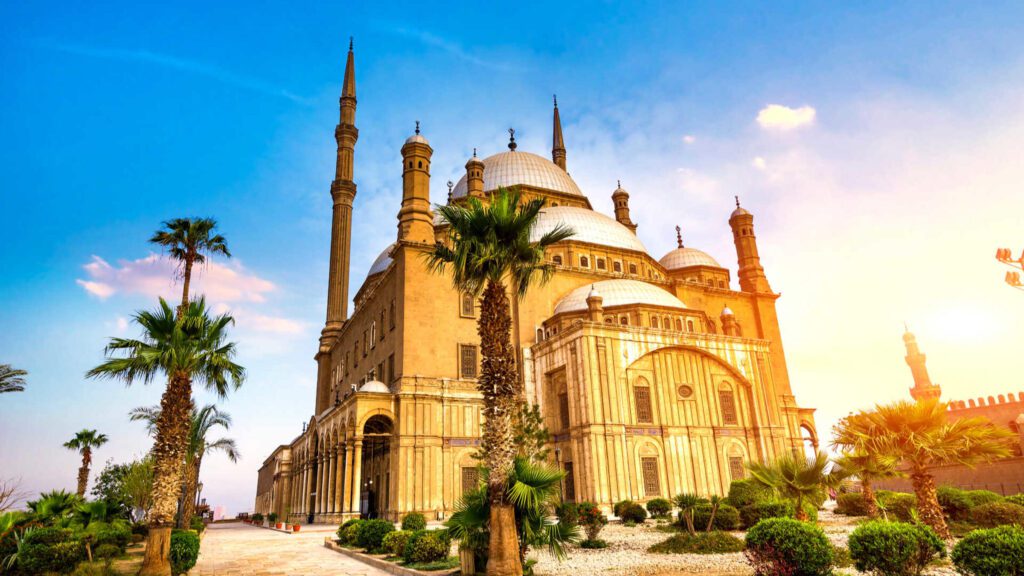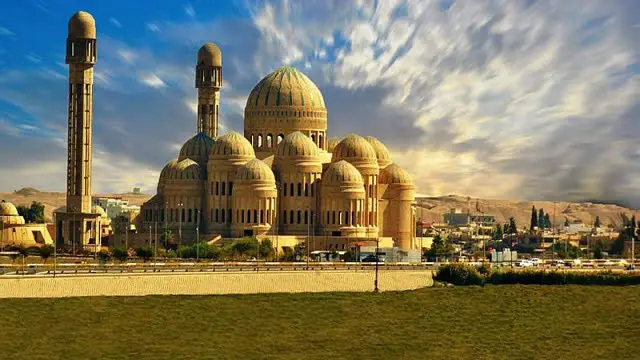Muhammad Ali Mosque (Alabaster) In Egypt

Egypt, a land famous for its ancient monuments and cultural richness, is home to one of the most famous masterpieces of Islamic architecture, the Mosque of Muhammad Ali. Often referred to as the Alabaster Mosque, this marvel dates back to the mid-19th century and stands as a testament to Egypt’s rich architectural history.
Located within the walls of Saladin Citadel, the Alabaster Mosque is a testament to the architectural ingenuity of the Ottoman era, reminiscent of the famous Sultan Ahmed Mosque in Istanbul. Commissioned by Mehmet Ali Pasha, an influential figure in the Ottoman Empire, the mosque was completed between 1830 and 1848.
The mosque’s nickname, the Marmar Mosque, stems from the extensive use of alabaster marble in the facade and interior walls, which lends an elegant luster to the structure. This exquisite choice of materials matched the opulent tastes of the era and continues to captivate visitors to this day.
Notably, the continuity of the mosque was ensured by Muhammad Ali Pasha’s successors, who diligently preserved the structure and made modest additions, enriching its cultural and religious significance. Among them were Abbas Hilmi Pasha I, Muhammad Said Pasha, Ismail Pasha, and Tawfiq Pasha, all of whom contributed to the construction of the mosque.


Construction and design
Muhammad Ali Pasha initially sought the expertise of the French architect Pascal Coste to design a university within the castle. However, when the project stalled, he turned to the Turkish architect Yusuf Bushnaq in 1830 to design the mosque. Inspired by the Sultan Ahmed Mosque in Astana, Bushnaq drafted a scheme that included a courtyard and a fountain with minor modifications.
The design of the mosque is rectangular in shape, and it is divided into an eastern section for prayer and a western courtyard, and each of them has a tribal door and a sea door. The prayer section features a large central dome that rises 52 meters above the ground and is supported by four arches resting on square shoulders. Intricate detailing can be seen in the alabaster-paneled walls, the muezzins’ seat, and the gilded carvings that adorn the mosque’s interior.
An interesting aspect of the mosque is its unique decoration, which is inspired by popular Turkish designs from the 18th century, rather than the Sultan Ahmed Mosque. Its captivating aesthetics include white ornamentation, colorful arches, and carvings, each of which contributes to the mosque’s stunning visual appeal.
As a tribute to its founder, the mosque houses the tomb of Muhammad Ali Pasha, which is surrounded by a gilded copper temple. This mausoleum mixes Turkish, Arabic and Egyptian motifs, reinforcing the mosque’s cultural significance.


Restorations
In an effort to restore the architectural grandeur of the Muhammad Ali Mosque, King Fuad I initiated a comprehensive restoration project on December 29, 1931. A respected committee of Egyptian and foreign engineers was formed to examine the mosque and draw up a plan to revitalize it. This ambitious project marks the beginning of a transformational journey for the historic site.
The reopening of the mosque for prayer during the reign of King Farouk I was another milestone. On February 24, 1939, King Farouk I personally performed the imposed Friday prayers, symbolizing the mosque’s triumphant return to its religious function. To mark the occasion, a brass door with intricate motifs was installed bearing the king’s name on both sides.
In subsequent years, the Egyptian Ministry of Antiquities has embarked on various restoration initiatives. In 2012, the mosque’s old carpets underwent a careful restoration, restoring them to their former glory. The following year, efforts were directed toward completing the clock tower restoration project, and ensuring its continued preservation.
A renewed campaign began in 2017, with the aim of bringing back the mosque’s original splendor. The endeavor included cleaning the marble coverings in the courtyard, dusting the fountain’s ornamentation to revive its vibrant colours, and making thorough studies of the intricate designs. The new motifs have been meticulously removed, allowing them to be reapplied using the latest scientific methods.
Despite the centuries, the Alabaster Mosque still captivates, and its grandeur has not diminished. The mosque is a poignant reminder of the architectural splendor of Egypt, even as it stands in silent testament to the vicissitudes of time and the enduring legacy of Muhammad Ali Pasha. As one explores the streets of Cairo, a must visit is the Mosque of Muhammad Ali, as it offers a unique journey into the city’s rich historical tapestry.


